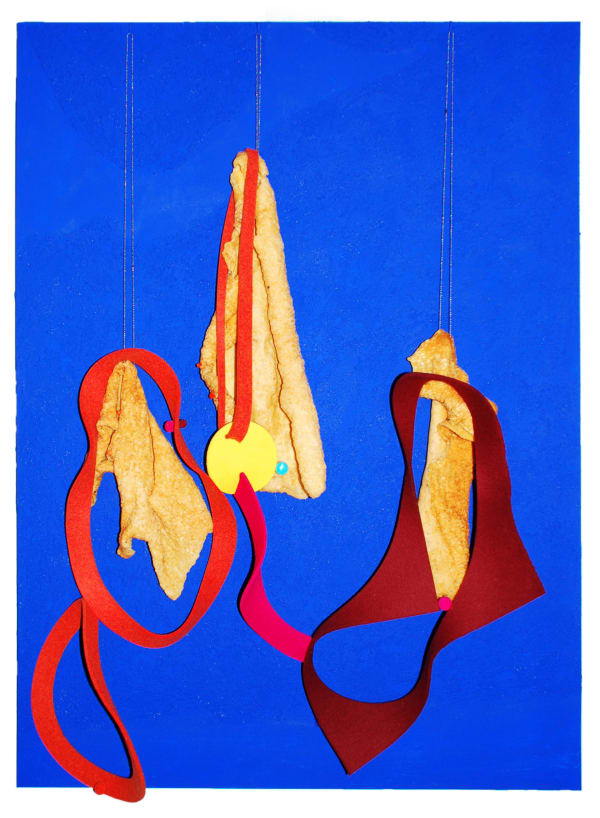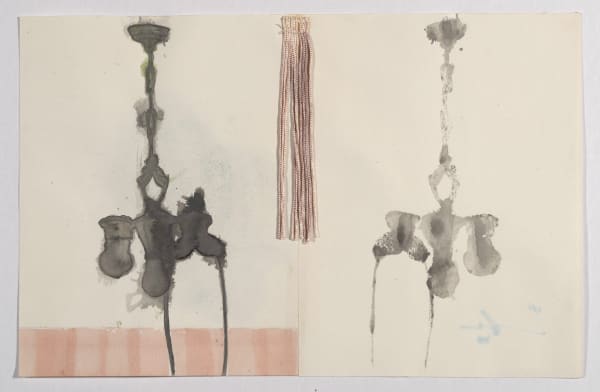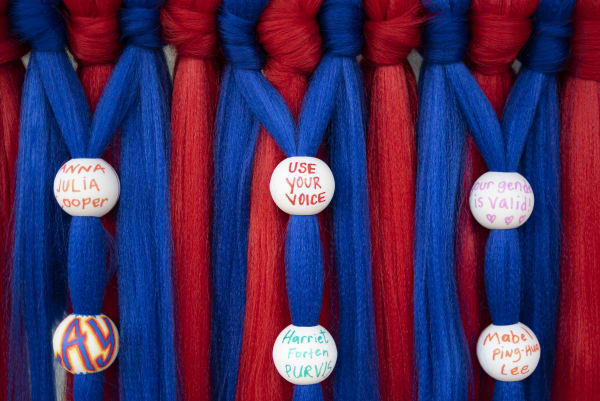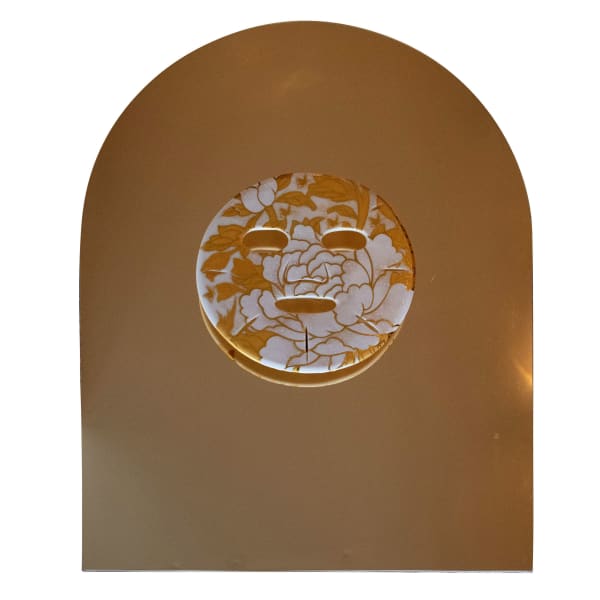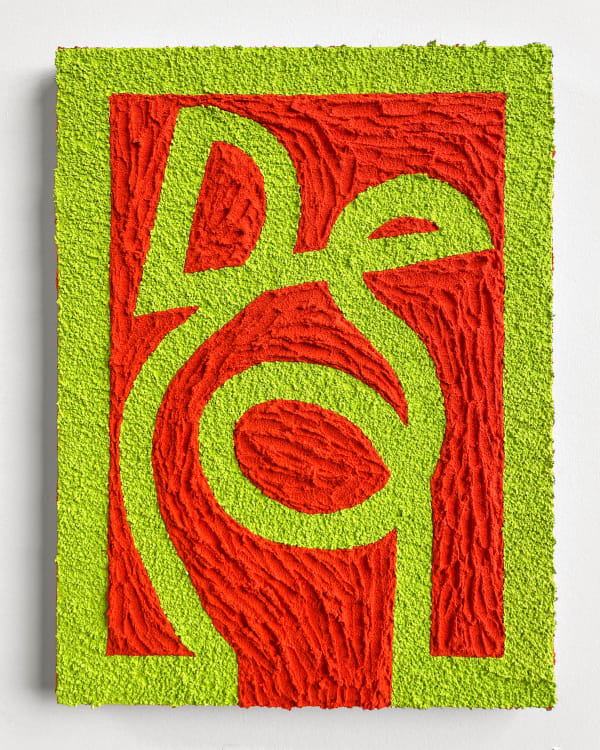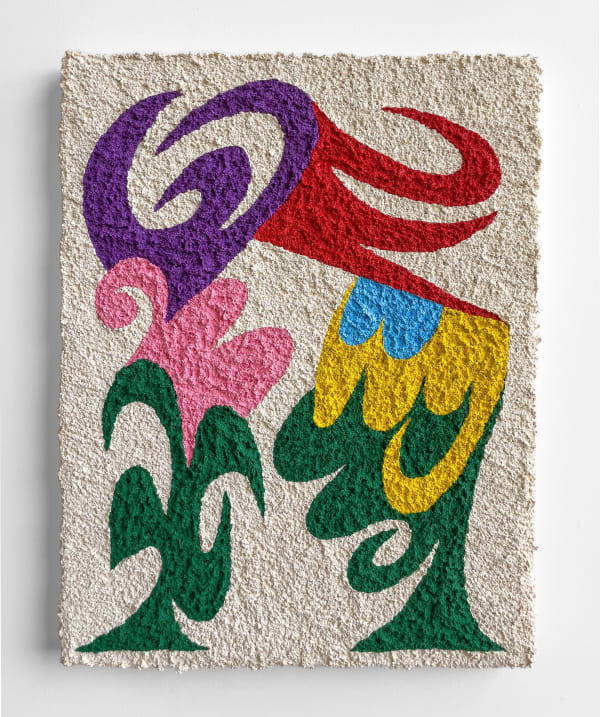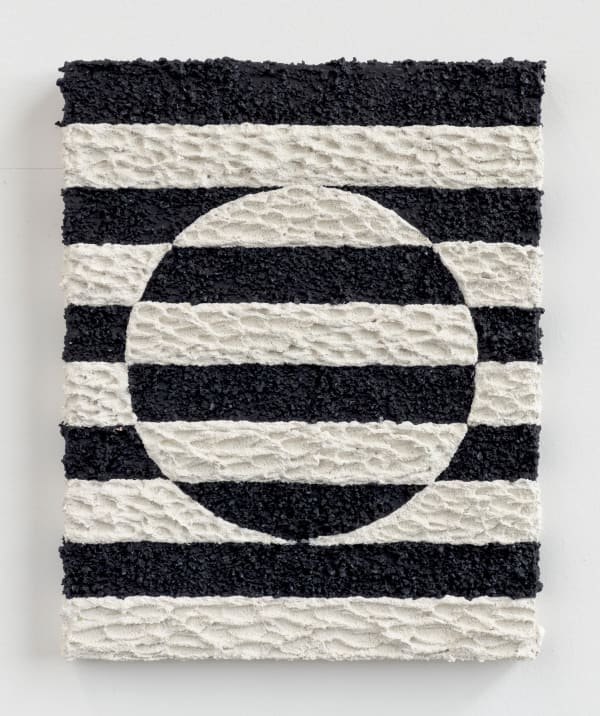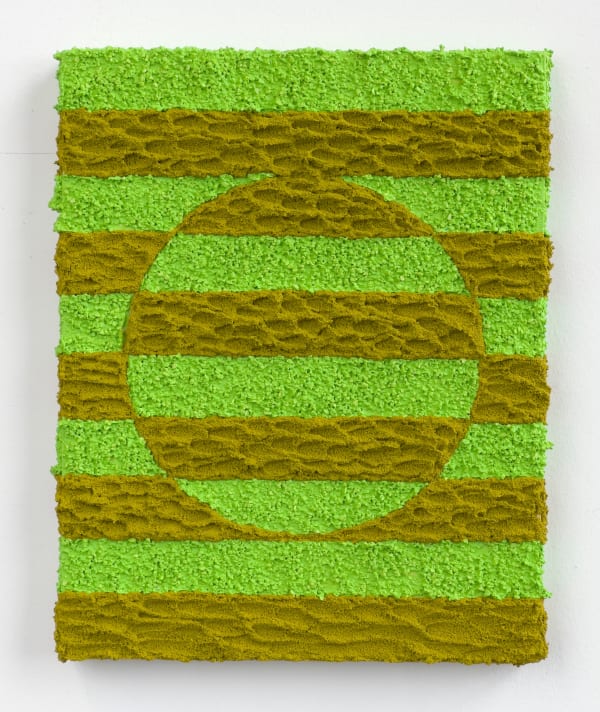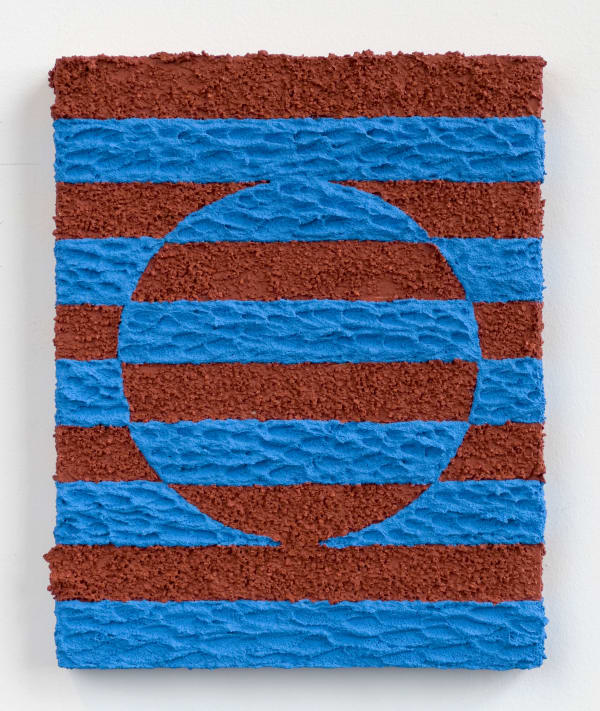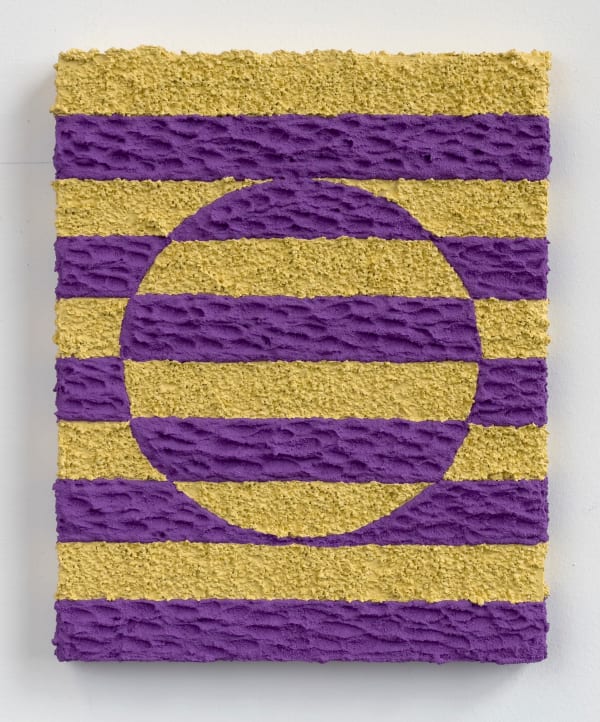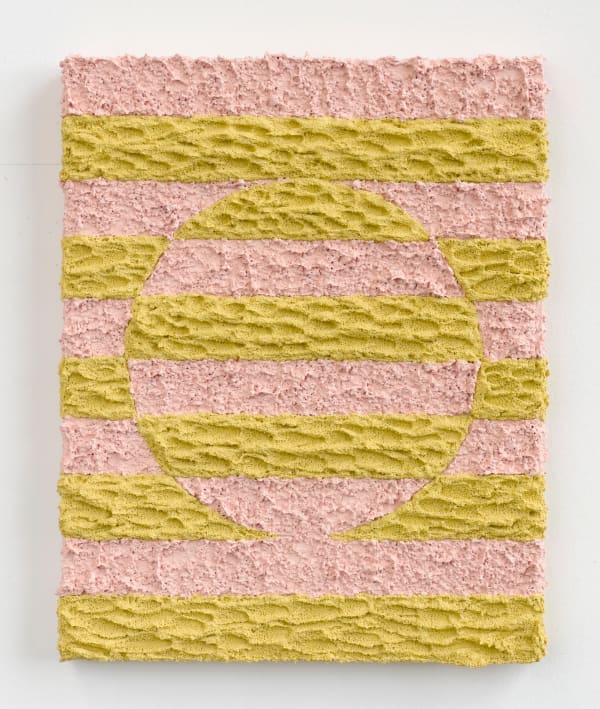Dallas Art Fair: Dallas
Ruiz-Healy Art is thrilled to present the work of Jesse Amado, Jennifer Ling Datchuk, and Carlos Rosales-Silva, to the 2021 edition of the Dallas Art Fair. Amado, Datchuk, and Rosales-Silva’s works for the Dallas Art Fair display resilience and vibrancy intrinsic to contemporary art and the Gallery’s mission.
Jesse Amado
In I Am Not Your Mexican #5, Amado incorporates chicharrones along with wool and acrylic paint. Using food as a material, Amado explains, "That material has significance, it has meaning, it has its own baggage, its own history, its own story to tell. If I acknowledge and respect that, then it’ll creep into the work and say something about who we are...Food is a part of us, and I'll give tribute to that."
Also featured in the Dallas Art Fair are historic works dating from the 1990’s and early 2000’s that were re-discovered by Amado while cleaning out his studio. The large scale works on paper epitomize Amado’s career-long interest in the power of text and abstract forms. His work Machine, for example, is taken after Andy Warhol’s iconic quote, “I think everybody should be a machine.” The artist states, “In the end, I expressed my humanity...and allowed my humanity, emotions, and intuitions to flow and open for further human experiences.” Toss, Pick, Catch (ones*ies...) No. 2 refers to gamesmanship and “the practice of winning games by questionable expedient without violating the rules.” Using materials like concrete, ink, charcoal, and graphite, Amado creates a game of art-making.
Jennifer Ling Datchuk
American Flag, was originally produced for New York University 100 Years, 100 Women, which celebrated the 100th anniversary of the ratification of the 19th amendment that guaranteed all American women the right to vote. However, “In 1920, this did not give all women the right to vote, as Asian American women could not vote until 1952, Native American women could not vote in all 50 states until 1957, and a majority of Black women could not vote until 1965,” the artist states. “We vote to create change and see our communities and values reflected in our elected officials...this work to guarantee the right to vote is multigenerational, multicultural, and intersectional. It is absolutely necessary to dismantle power structures and build an equitable and inclusive United States."
Cowboy Boots, explores the artist's heritage as a Chinese-American-Texan. Inspired by a pair of porcelain Victorian boots, the artist adapts the form to a cowboy boot with human hair for the fringe. Using symbols of the dragon and the phoenix, the boots symbolize strength, cultural adaptation, and the humorous term “Ni haody” - a combination of the Chinese “Ni hao” and Texas “howdy.”
In Flawless,the artist hopes that when we look in the mirror we see the beauty and power we inherited from our ancestors. "So many times I wished to see something other than my own reflection because I thought I needed to follow a standard. I hope you all know that you are Flawless just the way you are."
Carlos Rosales-Silva
Rosales-Silva’s works for the Dallas Art Fair reimagine modernist and post-modernist cultural history by mixing sand and stone with synthetic pigments. In the words of the artist, “The works are abstracted and brightly colored decolonial landscapes that offer a non-binary view of the world, one where natural organic landscapes are intertwined with human made structures. The physical materials of the paintings echo this idea. Sand and stone mixed with synthetic pigments and binders make up the rough surfaces that approximate an architectural surface that is both of the earth and processed synthetically. Formally the works are obsessive about color, shape, and texture, offering an alternative art history in which the vernacular visual cultures of the southwest United States offer threads that weave a historical tapestry, one that is overlapping and ever expanding.”
The Border Exchange Studies express artistic and cultural histories beyond the confines of language. The artist states, “There's a consistent influence of the landscape and architecture and the artists that I grew up with along the border of Texas, Mexico, and El Paso. I'm constantly looking back at the landscape, and looking back at the architecture.”
-
 Jesse AmadoI Am Not Your Mexican #5, 2019Le Corbusier acrylic, chicharron, virgin wool felt on canvas48 x 36 x 8 in
Jesse AmadoI Am Not Your Mexican #5, 2019Le Corbusier acrylic, chicharron, virgin wool felt on canvas48 x 36 x 8 in
121.9 x 91.4 x 20.3 cm -
 Jesse AmadoMachine, 2003Ink, graphite on paper40 x 51 in
Jesse AmadoMachine, 2003Ink, graphite on paper40 x 51 in
101.6 x 129.5 cm -
 Jesse AmadoToss, Pick, Catch (ones*ies...) No. 2, 1997Concrete, ink, charcoal, and graphite on paper26 x 20 in
Jesse AmadoToss, Pick, Catch (ones*ies...) No. 2, 1997Concrete, ink, charcoal, and graphite on paper26 x 20 in
66 x 50.8 cm -
 Jesse AmadoUntitled, 1998Watercolor and mixed media on paper9 x 14 in
Jesse AmadoUntitled, 1998Watercolor and mixed media on paper9 x 14 in
22.9 x 35.6 cm -
 Jennifer Ling DatchukAmerican Flag, 2020Synthetic hair, porcelain beads from Jingdezhen, China36 x 60 x 4 in
Jennifer Ling DatchukAmerican Flag, 2020Synthetic hair, porcelain beads from Jingdezhen, China36 x 60 x 4 in
91.4 x 152.4 x 10.2 cm -
 Jennifer Ling DatchukGiddy Up, 2021Porcelain and human hair7 x 3 x 30 in
Jennifer Ling DatchukGiddy Up, 2021Porcelain and human hair7 x 3 x 30 in
17.7 x 7.6 x 76.2 cm -
 Jennifer Ling DatchukFlawless (Small Butterflies), 2021Porcelain, gold and white pattern transfer from Jingdezhen, China, mirror plexiglass20 x 16 x 3 in
Jennifer Ling DatchukFlawless (Small Butterflies), 2021Porcelain, gold and white pattern transfer from Jingdezhen, China, mirror plexiglass20 x 16 x 3 in
50.8 x 40.6 x 7.6 cm -
 Carlos Rosales-SilvaSala con Alfombra y Cuadro, 2021Sand, crushed stone, and glass bead in acrylic paint on panel40 x 30 in
Carlos Rosales-SilvaSala con Alfombra y Cuadro, 2021Sand, crushed stone, and glass bead in acrylic paint on panel40 x 30 in
101.6 x 76.2 cm -
 Carlos Rosales-SilvaBorder Logic 2, 2021Sand, crushed stone, and glass bead in acrylic paint on panel16 x 12 in
Carlos Rosales-SilvaBorder Logic 2, 2021Sand, crushed stone, and glass bead in acrylic paint on panel16 x 12 in
40.6 x 30.5 cm -
 Carlos Rosales-SilvaVeggie Cookout, 2021Sand in flashe and acrylic paint on panel16 x 12 in
Carlos Rosales-SilvaVeggie Cookout, 2021Sand in flashe and acrylic paint on panel16 x 12 in
40.6 x 30.5 cm -
 Carlos Rosales-SilvaFloreria, 2021Sand, crushed stone, and glass bead in acrylic paint on panel18 x 14 in
Carlos Rosales-SilvaFloreria, 2021Sand, crushed stone, and glass bead in acrylic paint on panel18 x 14 in
45.7 x 35.6 cm -
 Carlos Rosales-SilvaBorder Bloom, 2021Sand in acrylic paint on panel16 x 12 in
Carlos Rosales-SilvaBorder Bloom, 2021Sand in acrylic paint on panel16 x 12 in
40.6 x 30.5 cm -
 Carlos Rosales-SilvaBorder Exchange Studies (Black & White), 2025Sand in acrylic and flashe10 x 8 x 1 in
Carlos Rosales-SilvaBorder Exchange Studies (Black & White), 2025Sand in acrylic and flashe10 x 8 x 1 in
25.4 x 20.3 x 2.5 cm -
 Carlos Rosales-SilvaBorder Exchange Studies (Dark Green & Light Green), 2021Sand in acrylic and flashe paint on panel
Carlos Rosales-SilvaBorder Exchange Studies (Dark Green & Light Green), 2021Sand in acrylic and flashe paint on panel
10 x 8 x 1 in
25.4 x 20.3 x 2.5 cm -
 Carlos Rosales-SilvaBorder Exchange Studies (Clay Brown & Light Cobalt), 2021Sand in acrylic and flashe paint on panel
Carlos Rosales-SilvaBorder Exchange Studies (Clay Brown & Light Cobalt), 2021Sand in acrylic and flashe paint on panel
10 x 8 x 1 in
25.4 x 20.3 x 2.5 cm -
 Carlos Rosales-SilvaBorder Exchange Studies (Light Blue and Lime Green), 2021Sand in acrylic and flashe paint on panel
Carlos Rosales-SilvaBorder Exchange Studies (Light Blue and Lime Green), 2021Sand in acrylic and flashe paint on panel
10 x 8 x 1 in
25.4 x 20.3 x 2.5 cm -
 Carlos Rosales-SilvaBorder Exchange Studies (Light Ochre and Royal Purple), 2021Sand in acrylic and flashe paint on panel
Carlos Rosales-SilvaBorder Exchange Studies (Light Ochre and Royal Purple), 2021Sand in acrylic and flashe paint on panel
10 x 8 x 1 in
25.4 x 20.3 x 2.5 cm -
 Carlos Rosales-SilvaBorder Exchange Studies (Light Ochre and Powder Pink), 2021Sand in acrylic and flashe paint on panel
Carlos Rosales-SilvaBorder Exchange Studies (Light Ochre and Powder Pink), 2021Sand in acrylic and flashe paint on panel
10 x 8 x 1 in
25.4 x 20.3 x 2.5 cm


